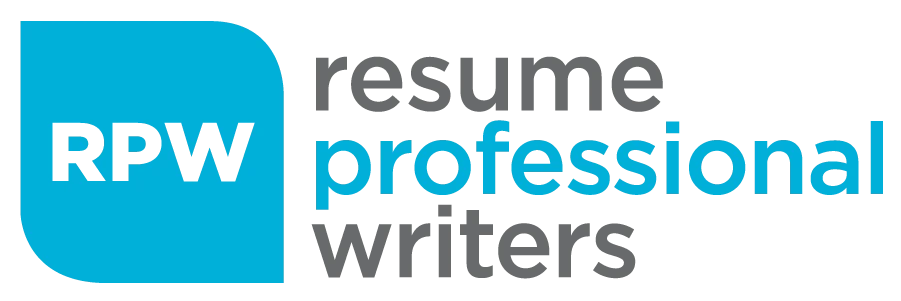When it comes to standing out in today’s hyper-competitive job market and during your job search, a well-written resume profile can make all the difference. Positioned at the top of your resume, this short but impactful summary introduces you to hiring managers and recruiters, setting the tone for the rest of your application. A strong resume profile can catch the reader’s attention quickly, especially when it includes quantifiable achievements and relevant skills. Targeting specific companies you are interested in can further enhance the effectiveness of your resume profile.
A resume profile is a written statement located at the top of your resume that briefly highlights the experience and skills you bring to the position, helping to define your area of expertise. Showcasing excellent customer service skills is particularly important for roles in retail and fast-food environments, as it underscores your ability to enhance customer loyalty and achieve sales targets. But what exactly is a resume profile, and how can you craft one that gets noticed?
In this comprehensive guide, we’ll break down everything you need to know about resume profiles—what they are, why they matter, how they differ from other resume sections, and how to write one that boosts your chances of landing an interview, including resume summary examples.

Introduction to Resume Profiles
A resume profile is a crucial section at the top of a resume that highlights a candidate’s key skills, qualifications, and experience. It serves as an introduction to the candidate’s professional background and is designed to grab the attention of potential employers. A well-crafted resume profile can significantly boost a candidate’s chances of securing an interview and ultimately landing their dream job.
Resume profiles should be concise, typically consisting of three to five sentences, and should focus on your most relevant skills and achievements. It’s essential to tailor your resume profile to the specific job you’re applying for, ensuring that it aligns with the job description and highlights the qualifications that make you a strong candidate. Including measurable impact, such as metrics or specific accomplishments, can further enhance the effectiveness of your resume profile.
Maintaining high standards in professional environments is crucial for optimizing operations and productivity, as well as ensuring excellent service and adherence to regulations.
Whether you’re an entry-level candidate, such as an administrative assistant, or an experienced professional, a well-crafted resume profile is essential for standing out in a competitive job market. By following the tips and examples provided in this article, you can create a resume profile that effectively communicates your value and helps you achieve your career goals.

Understanding the Importance of Resume Profiles in Job Search
A resume profile is a crucial section in a resume that highlights a candidate’s relevant skills, experience, and achievements. It is typically located at the top of the resume and is designed to grab the attention of potential employers. The profile should be concise, clear, and tailored to the specific job and industry. It should also include metrics and specific examples to demonstrate the candidate’s impact and potential.
When writing a resume profile, it is essential to consider the experience level and the type of job being applied for. For instance, a candidate with five years of experience in digital marketing may want to highlight their proficiency in designing and executing successful marketing campaigns that drive web traffic and increase user satisfaction. On the other hand, a candidate with six years of experience in sales may want to showcase their excellent customer service skills and ability to exceed sales targets.
A well-written resume profile can make a significant difference in a job search. It can help a candidate stand out from the competition, demonstrate their commitment to their profession, and showcase their relevant skills and experience. Additionally, a resume profile can be used to highlight a candidate’s hobbies and interests, which can be an excellent way to showcase their personality and creativity.
In terms of structure, a resume profile should be no more than two to three sentences long and should be written in a clear and concise manner. It should also include relevant keywords and phrases that are specific to the job and industry. For example, a candidate applying for an office job may want to include keywords such as “project coordination,” “office management,” and “customer service.”
When it comes to filling out a resume profile, there are several key elements to consider. These include:
- Relevant skills and experience
- Achievements and accomplishments
- Education and certifications
- Career goals and objectives
- Relevant hobbies and interests
By including these elements and tailoring the profile to the specific job and industry, a candidate can create a strong and effective resume profile that will grab the attention of potential employers and help them stand out from the competition.
In conclusion, a resume profile is a critical component of a resume that can make a significant difference in a job search. By highlighting relevant skills, experience, and achievements, a candidate can demonstrate their potential and commitment to their profession. Whether you’re applying for an office job, a sales position, or a role in digital marketing, a well-written resume profile can help you stand out from the competition and increase your chances of securing an interview.
What Is a Resume Profile?
A resume profile—sometimes called a professional summary or resume summary—is a brief paragraph located at the top of your resume. It offers a concise overview of your skills, experience, achievements, and career goals, all tailored to the job you’re applying for. A resume profile should reflect the candidate’s skills and accomplishments, aligning them with the company’s goals and culture. It is similar to an objective or summary statement, but is more detailed and combines your career goals with achievements.
Showcasing involvement in specific programs, such as an arts & crafts program for geriatric individuals, can highlight your commitment to enhancing the quality of life for those you serve.
Think of it as your personal elevator pitch. In just 3 to 5 sentences, it answers the question: Why should this employer consider you for the role? Candidates should also express what they are seeking in their career, showcasing how they aim to leverage their skills to contribute positively to their prospective employers. Additionally, candidates should express their interest in engaging with companies that align with their career goals, demonstrating a proactive approach to their job search strategy.
Example of a Strong Resume Profile:
Results-oriented marketing specialist with six years of experience driving brand growth through data-driven campaigns and strategic content planning. Adept in SEO, PPC, social media marketing, and digital marketing strategies. Proven track record of increasing engagement and ROI for Fortune 500 clients.

Why Is the Resume Profile Important?
Your resume has roughly 6 to 10 seconds to make an impression. That’s how long recruiters spend scanning each one, according to eye-tracking studies. A powerful resume profile at the top of your document immediately draws attention to your most relevant qualifications, including your communication skills and accomplishments in exceeding sales targets. A resume profile is the first section that hiring managers notice when reviewing resumes, so it should be impactful.
Key takeaways: A strong resume profile quickly highlights your value, aligns your background with the job description, and sets the tone for the entire resume.
Look at examples of effective resume profiles to understand how to craft your own.
Here’s why it matters:
- Highlights your value quickly
- Demonstrates your commitment by aligning your background with the job description
- Sets the tone for the entire resume
- Boosts keyword optimization for ATS (Applicant Tracking Systems)
In essence, the resume profile ensures your application isn’t just skimmed—it’s read.
Resume Profile vs. Resume Objective
Many job seekers still confuse the resume profile with the resume objective, but these are fundamentally different. The choice between a resume profile and a resume objective depends on the candidate’s experience and career goals.
| Aspect | Resume Profile | Resume Objective |
|---|---|---|
| Focus | What you offer to the employer | What you want from the job |
| Tone | Employer-centric | Self-centric |
| Content | Skills, achievements, and value | Career goals and aspirations |
| Modern Use | Highly recommended | Less commonly used |
While a resume objective may still be appropriate for entry-level candidates or those making a career change, a resume profile is often more effective for professionals with relevant experience.
Using bullet points as an option can enhance clarity and presentation in a resume profile. Having different options available for resume formatting ensures that job seekers can tailor their resumes to best fit their individual needs and career goals.
When to Use a Resume Profile
A resume profile is ideal in the following scenarios:
- You have at least five years of experience in your industry.
- You’re applying for a mid- to senior-level position.
- You want to showcase specific achievements or technical skills.
- You’re targeting roles that require a niche or specialized background.
Tailoring your resume profile according to your experience level can significantly enhance its relevance.
If you’re early in your career or switching industries, a modified profile or combination format might work best. Even then, you can still create a powerful opening by focusing on your transferable skills and accomplishments. Make sure to talk about your skills and achievements clearly to highlight your suitability for the role.
How to Write a Resume Profile That Gets Results
Here’s a step-by-step guide to crafting an attention-grabbing resume profile: Carefully review the job posting to decide what information to include. Highlight the skills, qualifications, and keywords the potential employer emphasizes. It’s important to tailor your resume profile to the preferred skills, qualifications, and experiences listed in the job posting.
Covering various topics in your resume profile is essential to demonstrate your versatility and comprehensive understanding of the job requirements.
Showcasing measurable achievements in your resume summary is crucial as it reflects the impact of your actions and highlights your strong analytical skills. By detailing specific outcomes from past roles, you provide a clear illustration of your skills and effectiveness, thereby enhancing your appeal to recruiters. Additionally, managing meetings effectively can be a significant asset, showcasing your ability to handle administrative tasks and reduce unnecessary in-person meetings.
1. Analyze the Job Description
Carefully review the job posting. Highlight the skills, qualifications, and keywords that meet the job criteria the employer emphasizes.
2. Summarize Your Career Highlights
In 3–5 sentences, summarize your top accomplishments, years of experience, job titles, and key skills, showcasing your most significant achievements. Use numbers when possible.
3. Focus on What Sets You Apart
What makes you better than other applicants? Mention certifications, proficiency in technical skills, leadership skills, or awards. Quantifying your achievements with metrics in your resume profile provides concrete evidence of your capabilities and successes. Profiles often include details about accomplishments and achievements using percentages or statistical data to explain results beneficial for the company.
4. Tailor It to Each Role
Customize your resume profile for every job application. This significantly increases your relevance and improves your chances with applicant tracking systems.
5. Keep It Concise and Powerful
Avoid filler words. Be direct and results-oriented. Use active language, positive terms, and quantifiable achievements. A resume profile should be concise and normally consists of three to five sentences, aiming to quickly convey relevant qualifications.

Resume Profile Examples by Industry
Showcasing accomplishments in achieving outstanding sales performance, such as exceeding sales targets, is crucial for standing out in the competitive job market.
Look at examples of effective resume profiles to see how you can highlight your skills and achievements.
Here are examples of customized resume profiles for different fields to guide your writing:
Marketing Professional
Strategic digital marketer with 7+ years of experience driving multi-channel campaigns across SEO, SEM, and social media. Increased organic traffic by 120% for top-tier clients. Skilled in Google Analytics, HubSpot, and A/B testing.
Registered Nurse
Compassionate registered nurse with 5+ years in acute care and emergency medicine. Adept at managing patient care plans, administering medications, and coordinating with multidisciplinary teams. Known for high patient satisfaction and excellent critical thinking.
Software Developer
Innovative software developer with 4 years of experience in full-stack development using JavaScript, React, and Node.js. Led a team that reduced application loading time by 60%. Passionate about clean code and agile methodologies.
Sales Executive
Results-driven sales executive with a 10-year track record in B2B sales. Closed $5M+ in new business over the past two years. Expert in consultative selling, CRM software, and territory expansion.
Common Mistakes to Avoid in Resume Profiles
Even a great resume profile can fall short if common pitfalls aren’t addressed. One crucial aspect is ensuring that your resume content aligns with your genuine area of interest. Here are key mistakes to steer clear of:
Too Generic
Avoid phrases like “hard-working professional” or “team player.” They add no measurable value.
Using Third-Person
Always write in first-person implied tone (i.e., omit “I” but speak from your perspective).
Overloading with Buzzwords
Use industry keywords, but avoid stuffing buzzwords that don’t add meaning.
Including Irrelevant Information
Keep it relevant to the target role, not your entire life story.

Optimizing Your Resume Profile for ATS
Most companies today use applicant tracking systems to screen resumes before a human ever sees them. To ensure your resume profile passes through:
- Use keywords from the job description
- Include industry-specific terminology related to web traffic and SEO
- Use job titles aligned with the posting
- Avoid using graphics or unusual formatting
Having different options available for resume formatting is crucial to cater to the diverse needs of job seekers. This helps ensure your resume gets into the right hands.
How a Resume Profile Fits into the Full Resume
While your resume profile is crucial, it’s just one part of a larger document. To reinforce your candidacy, ensure the following sections are also strong:
- Professional Experience – Highlight key areas of professional experience and include quantified achievements.
- Skills Section – Highlight both hard and soft skills.
- Education – Add degrees, certifications, and relevant training.
- Additional Sections – Consider awards, projects, or affiliations.
Your profile should set up the rest of your resume, acting as a teaser that makes the reader want to explore further.
Resume Profile Tips for Different Career Levels
Here’s a quick guide to writing resume profiles for different career stages. Tailor your summary based on your experience level to make the best impression:
Entry-Level
- Focus on academic achievements, internships, and transferable skills. Highlight your experience and skills related to math and other relevant subjects, such as personalized lesson plans or one-on-one tutoring, which can significantly impact academic performance.
- Mention career interests and future goals relevant to the role.
Mid-Career
- Emphasize years of experience, such as ‘six years’, promotions, leadership, and results.
- Highlight a blend of technical and strategic capabilities.
Senior-Level or Executive
- Include impact-driven achievements such as revenue growth, improving production efficiency, or organizational leadership.
- Showcase thought leadership and industry influence.
Resume Profile Templates You Can Customize
Here are three plug-and-play templates that offer various options for resume formatting to cater to different professional needs:
General Professional
[Experienced] [Finance Professional] with [10] years of experience in [finance and accounting]. Proven track record in [financial analysis] and [strategic planning]. Skilled in [financial reporting], [budget management], and [business growth and efficiency in financial processes].
Career Switcher
Passionate [Current Field] professional transitioning into [Target Field], leveraging strengths in [Transferable Skill 1] and [Skill 2] relevant to administrative and office jobs. Proven success in [Achievement] such as office management, scheduling, and document handling. Eager to contribute to [Company/Role] goals.
Executive Summary
Visionary executive leader with over [X] years in [Industry]. Spearheaded initiatives that generated [Result]. Expert in negotiating and closing deals, [Skill 1], [Skill 2], and cross-functional team leadership.

Elevate Your Resume with a Professional Touch
Even with the best resume profile examples and templates, seasoned professionals recognize that writing a winning resume takes time, strategy, and a sharp eye for detail. If you’re looking to maximize your chances of getting hired, consider having your resume professionally written by experts who know what employers and ATS systems are looking for. By doing so, you can continue to refine and improve your resume, ensuring it remains engaging and effective.
Crafting a well-structured and comprehensive resume profile is crucial for making a strong first impression on potential employers. By highlighting relevant skills, experience, and achievements, job seekers can increase their chances of securing an interview and landing their dream job. Remember to keep your resume profile concise, clear, and tailored to the specific job and industry. Use metrics and specific examples to demonstrate your impact and showcase your skills.
Let seasoned resume writers help you craft a powerful document that opens doors. Explore our professional resume writing services and make your resume profile work harder for you.








